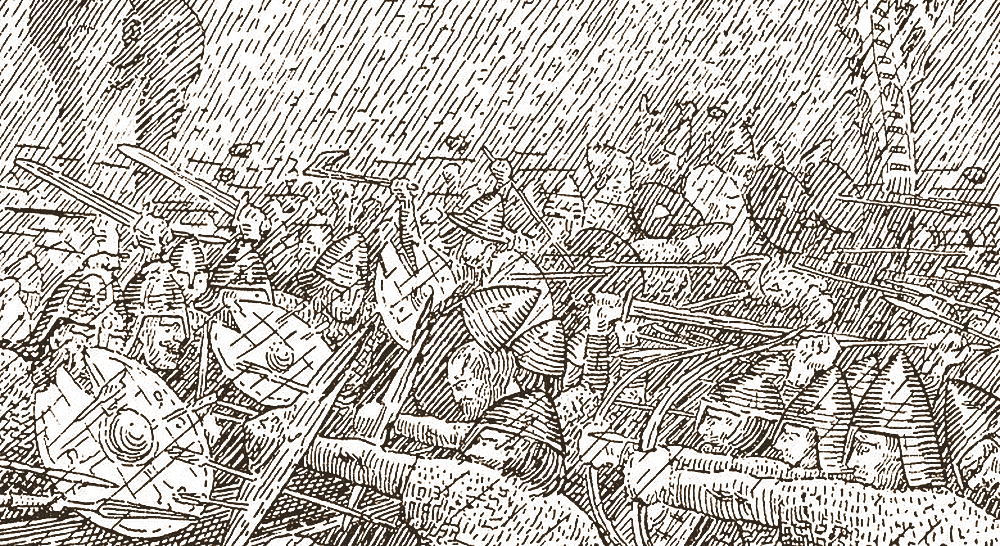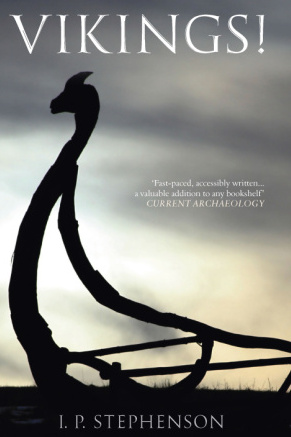 For two years a rather glamorous band of gleaming-haired, swaggering Vikings have graced our television screens. It is the antithesis to the image we have of ‘hairy horn-helmed barbarians’, the savage and ruthless invader we envision when we think of the Viking. Vikings producer Michael Hirst wants to explore in greater depth the spirituality and religion of Viking culture and how it effected their mindset. Hirst’s Ragnar Lothbrok is a hero designed to capture out hearts, with his brooding good looks, his loyalty to his family and his satisfyingly sensible approach to relations with the Anglo-Saxon kings. Hirst’s Ragnar Lothbrok is more concerned with finding arable soil for his people than a life of warfare and raiding.
For two years a rather glamorous band of gleaming-haired, swaggering Vikings have graced our television screens. It is the antithesis to the image we have of ‘hairy horn-helmed barbarians’, the savage and ruthless invader we envision when we think of the Viking. Vikings producer Michael Hirst wants to explore in greater depth the spirituality and religion of Viking culture and how it effected their mindset. Hirst’s Ragnar Lothbrok is a hero designed to capture out hearts, with his brooding good looks, his loyalty to his family and his satisfyingly sensible approach to relations with the Anglo-Saxon kings. Hirst’s Ragnar Lothbrok is more concerned with finding arable soil for his people than a life of warfare and raiding.
Yet Ragnar Lothbrok himself is a myth, a creation of the heroic songs and sagas that paint a portrait of the warrior elite. That’s not to say that the real history of the Vikings does not live up to the legends, the reality is just as fascinating. Historian Ian Stephenson joins us today to discuss his latest book, Vikings! and how warfare was the integral aspect of the Viking outlook.
You said that historians and archaeologists are able to present the more peaceful side of the Vikings, yet “peaceful activities were either resultant from the activities of, or were designed to support, the ruling warrior elite”. Was the warrior one of the more important aspects of Viking culture?
The simple answer is yes, but then the next question must then be “why?”
I am currently reading, (and enjoying!) Ian Morris’ new book “War: What is it good for?” Morris suggests that war is both productive and counter-productive. The former because great empires (such as Rome) impose order, peace and stability; the latter because when the stability of the establishment is overthrown by war, the aftermath is often a period of uncertainty and instability.
This very much echoes the point I make. If we leave aside the whole question of the fall of the Roman Empire in the West (together with the negative effect this probably had on our history) and look instead at how the barbarians, (and in particular, the Vikings), viewed war and warriors, then in some ways the productive/counter-productive applies more to the bigger picture than to the specifics of a particular group.
To fully answer the question of how important warfare and warriors were in Viking culture, we need to add into the mix the “religion of the prince is the religion of the people” factor. Although this is more generally associated with the Renaissance/early modern period, it applied equally in Anglo-Saxon England. If we look at this factor in purely religious terms then it did not work out so well for some Scandinavian rulers in this period, but if we look at it in more general terms and view it as “the culture of the prince” then yes “the warrior” was the most important concept in Viking culture. What you have is a society where the top of the tree is martial and everything else flows from that.
Why? Well, that takes us back to “war, what is it good for?” Once a new regime has been successfully established, the aftermath of uncertainty and instability gives way to peace, stability and riches. The king, (or with small or petty kingdoms the lord/ ruler) was the shield of his people; he was the treasure giver. Yes, there was a productive/counter-productive element, but it was altogether smaller and more personal, confined to the people ruled by this individual, and not to a general overview of the merits of warfare as a whole. A successful ruler was a successful warrior. The opening of the Beowulf poem stresses that and we do not see this changing much over the centuries. Thus victory in war brought gold, captives and livestock, which were distributed to your warrior followers. Lords were expected to be generous, as this secured them a strong loyal following. It increased their fame and helped to ensure that they would have further success in war. They would be feared by their neighbours, who would consequently be scared to attack them, thus ensuring the security of their boundaries or frontiers.
As a result, people who were not warriors – the farmers, traders, and craftsmen – were safe and could operate in peace, producing everything that the warrior elite needed in terms of food, clothes, weapons, buildings etc.
The converse were weak rulers, such as Aethelred II “the Unready”, who were not martial. Aethelred II, did not lead his troops into battle and (his administrative reforms aside) led his country to defeat, turmoil and conquest. So yes, warriors were important. They sat at the top of the social tree and defined the cultural mores of the age and likewise, the social structure. Those below them existed to serve and service the elite, but in order to inspire this service the warrior elite had to be just that – they had to be successful.
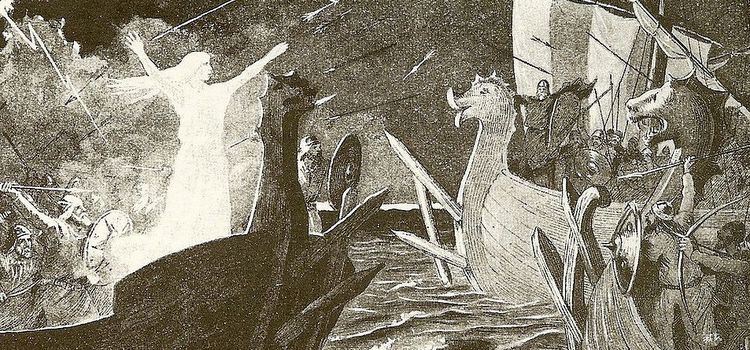
You stress that the Viking sagas are not particularly trustworthy sources as they are not contemporary. Do you think the sagas in fact romanticise Viking culture?
My favourite bit of all the sagas is the interplay between Harold II Godwinson, his brother Tostig and Harald Hardrada of Norway, just before the Battle of Stamford Bridge begins, where Harold of England offers his Norwegian adversary “seven feet of ground”. Did that actually happen? Well that’s another matter – but you feel like it should have! The problem with the sagas is that they were written at a time when Iceland was changing, losing its independence and falling under the control of the Norwegian crown.
The sagas, or rather the family sagas, hark back to a “golden age” of independence, they portray the ancestors of the then main players in Icelandic politics in a favourable, or at least an important, light. Great historical figures and events stride across their pages. The heroes of the sagas are larger than life, not at times particularly pleasant, always say the right things and appear at major events. But the same is true of Sharpe and Flashman, and we don’t believe that they are real!
This may seem a bit harsh, but, in many respects, the sagas were written to fulfil a political agenda which had everything to do with the period they were written in, and nothing to do with the actuality of the period they purportedly represent. Verisimilitude is merely the appearance of reality, it is not reality. This of course does not stop them being used even now. The appeal of the legendary Jomsvikings is powerful, and the sagas have for so long been viewed as the reality of the Viking world that it is hard not to accept the vision they portray.
My view is that the sagas are like the end of The Man Who Shot Liberty Valance: “print the legend!”
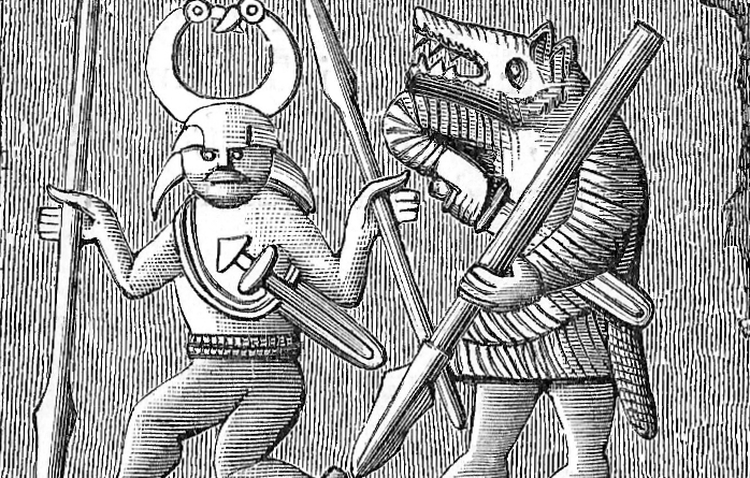

You state that the Berserkers probably reflect a popular fictionalised view of the past, are there any other myths we can attribute to the sagas?
You can look at this in two ways: firstly there are aspects of the sagas which were believed to be real and are now viewed with scepticism; secondly there are aspects of the sagas which have become an integral part of our cultural landscape, inhabiting everything from comics, to films to operas.
Berserkers most obviously fall into this first category and although books are still written which treat the idea as real, they are forced to support their arguments with reference to the most legendary of sagas, such as Jomsvikings and Hrolf-Kraki’s. The fact that they do not (with one literary exception) exist outside the world of the sagas, does not really help their cause – the exception being a description of an ordered company, which is quite different from the manic warriors of legend!
The other obvious candidate is the “Blood Eagle”. King Edmund of East Anglia is supposed to have been sacrificed to Odin by having his ribs opened at the back and his lungs pulled out to give him “bloody wings”. Unpleasant – definitely; hagiography – absolutely. Edmund has been given a martyr’s death well after the event, conflated from the death of other saints and embellished in the process. The same is supposed to have happened to Ella of Northumbria in payment for his killing of Ragnar Lothbrok -which brings us on to the second aspect: sagas and our modern cultural landcape.
I’m perhaps showing my age here, but the classic Kirk Douglas/Tony Curtis movie “The Vikings” is based on the mythical Ragnar Lothbrok, although the film changes the pit of snakes of the saga into a pit of dogs! Obviously the saga was just too unbelievable, even for Hollywood! If you want something a bit more modern, you just have to look to the recent, and I must say hugely fun – “Avengers” movies. Thor, Loki, Odin – the whole Asgard of the comics -and the films, are all based on Norse legend. Staying with graphic novels, the superb “Lucifer” series at times draws quite heavily on Norse mythology.
Finally of course we have Wagner’s magnum opus “The Ring Cycle”, based not only on the later medieval “Nibelungenlied” but also drawing heavily on the Norse “Edda” and the “Saga of the Volsungs”.

What are the more reliable contemporary sources we can draw on?
For this we must turn to the Viking’s enemies. If pre-Christian Scandinavia was non-literate, the same cannot be said for the peoples the Vikings attacked. Thus we look to Anglo-Saxon, Frankish, Irish, Byzantine and Arabic sources. Of course these are biased – how can they fail to be, when we are getting the victims’ take on events. Equally, the authors had their own agendas and perspectives, which may differ hugely from our own. They recorded what was important to them, which isn’t always necessarily what we want.
Works such as the Anglo-Saxon Chronicle also appear in a number of manuscript versions and these are not all the same. Some sections were written with the benefit of hindsight, and favour some parts of the country, (most notably Wessex), over others. The Chronicle, like the various Frankish and Irish annals was the work of clerics, as indeed were a number of other contemporary documents that shed light on the Viking period. The result is that explanations at times come down to the “wrath of God”; and (unsurprisingly) the chroniclers are more concerned with the church, church matters and the impact of the Vikings on the church. Equally, in comparison with the sagas, these sources are often brief. They are lacking in detail and present far less of a whole world view; thus the lure of the sagas. When combined, however, the various chronicles, law codes, wills, biographies (such as Alfred’s), plus Alfred’s own writings, sermons, and poetry, along with archaeological and representational evidence, do allow us to build a contemporaneous picture of the Vikings and their age.
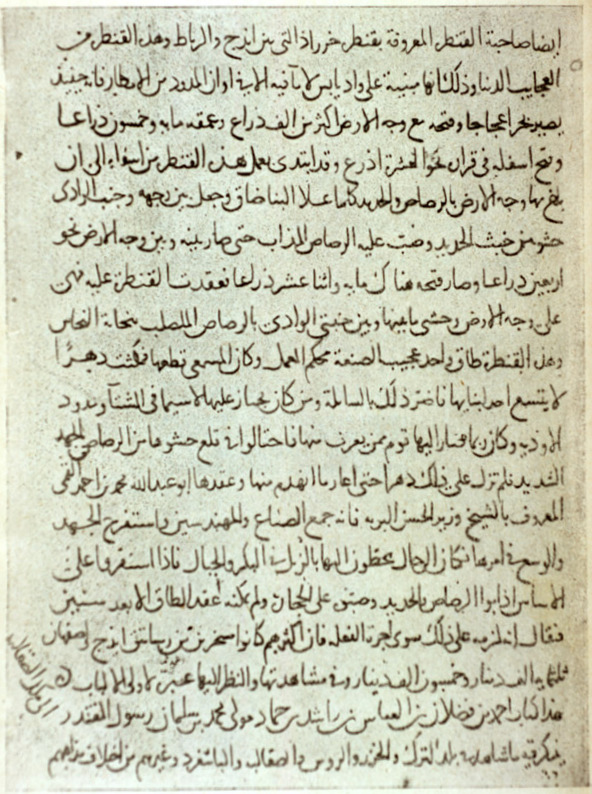
One source which is not relatively brief, are the writings of Arab traveller, Ibn Fadlan, whose work is also the inspiration, (along with Beowulf) for the film “The 13th Warrior”, which is always worth watching! Ibn Fadlan journeyed into what is today Russia – the upper reaches of the Volga River to be precise – and he recounts in reasonably detailed and remarkably dispassionate terms his meeting with the Rus Vikings. You do, however, get the impression that he viewed them as dirty and unhygienic by his own standards, and there is the fact that they are Rus and therefore their original Viking culture has been diluted/changed/influenced by the steppe cultures with whom they have mingled. This makes it difficult to use Ibn Fadlan to draw parallels across the whole of the Viking world.
This brings me to another problem with our source material; two problems really. Firstly, the Vikings travelled to four continents – Europe, Asia, Africa and North America – over the course of nearly three hundred years. Their experiences obviously differed, and fashions, customs and morals changed and adapted, depending upon the local influences.
Secondly, (and the real fly in the ointment for what was undoubtedly one of their greatest feats: the exploration of the North Atlantic and the discovery of the Americas), other than two very brief references in other sources, we have only the later Viking sagas to record in detail the deeds of those bold adventures – seekers after wealth and land.
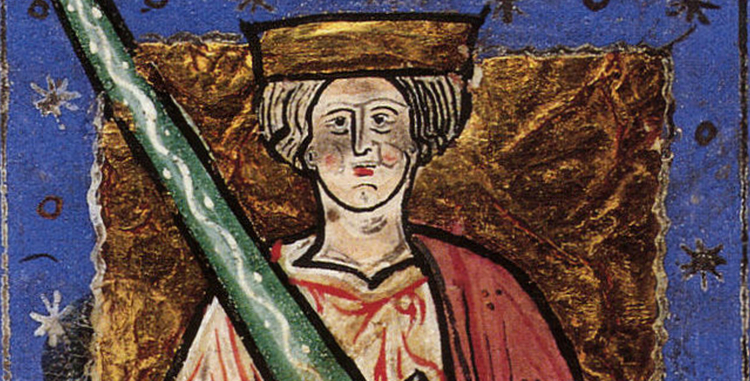
Why was the payment of Danegeld, a payment to Viking raiders to buy peace, so controversial?
Well actually it’s not that controversial as a means of diplomacy – indeed it has a long history. The Romans used it; Alfred and his successors used it; but the payment of treasure to buy peace is only one half of the equation. That is the “carrot” – what you also need is the stick. Under Aethelred II, it was the stick was most definitely lacking! If done properly, you are not so much buying peace as rather ensuring the security of your borders.
Potential enemies or raiders became friends (albeit at a price); you pay rulers beyond your borders to create a series of friendly buffer states. These rulers in turn gain treasure, which they can distribute to their warriors and thus you are creating not just stability but also creating allies for any future military action you may need to take. However, in the back of everyone’s minds, both giver and receiver, must be the thought that whilst with the left hand he gives gold, in the right hand he holds a very big stick and he’s not afraid to use it! Thus Rome extended its influence beyond its physical borders by creating a series of friendly tribal leaders who were quite happy to accept Roman gifts in exchange for peace – but always with the knowledge that the mighty legions were at hand to punish transgressors.
In England, as the might of Wessex grew under Alfred, Edward and Athelstan, so gold at times bought off invaders, but as the years progressed more and more of the country fell to their armies and the stick replaced the carrot. In such situations there are always easier pickings to be had elsewhere, and indeed at times you see Viking raiders moving back and forwards across the Channel depending upon where resistance was deemed to be lightest.
The controversy with Aethelred II comes from whether you believe he was successful or not. A payment of £10,000 in 991 led to another of £16,000 in 994, followed by further increasing payments in 1002, 1007, rising to £48,000 in 1012, followed by a further albeit smaller payment of £21,000 in 1014; all in all a total by some calculations of £155,000 – a colossal sum by the standards of the day. Arguments that this shows that Aethelred had a good administration are true, but whether it allowed him to divide and conquer his opponents is another matter. What is true is that his system placed an immense burden on those who had to pay. Viking raids did not cease (surely such sums only excited the cupidity of the Vikings?) and in the end a Danish host led by Swein Forkbeard conquered the country and drove Aethelred into exile. Historians continue to debate the merits of Aethelred’s reign; for my part, I see him as one of the most disastrous kings to ascend to the throne of England, but then great dynasties cannot always produce great kings.
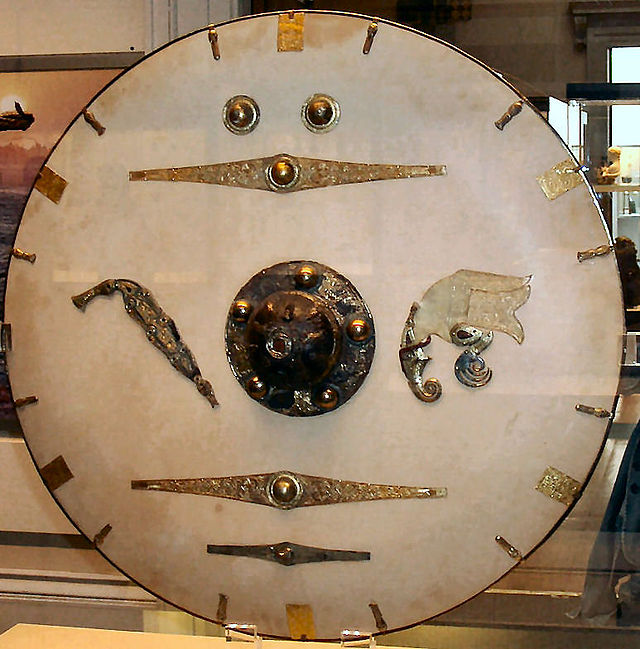
You discuss how male grooming was an important part of warrior culture and that the warrior would even ensure he were wearing the latest fashions. How important was the power of appearance?
Very! From archaeological evidence we know that male grooming for warriors goes back at least to the Bronze Age. Warfare today is a world of khaki and camouflage, and for the British Army this has been the case in some regiments since the mid-19th century. Before that, however, image and display were an important part of warfare. One British officer at Waterloo commented that he thought Napoleon’s army meant to frighten them from the field by the sheer splendour of their appearance. Busbys and mitre caps were worn to increase the apparent height of the wearer, as indeed were conical helmets in the ancient and medieval periods. The bright gold and garnets we see on swords, scabbards and belts from Sutton Hoo or in the Staffordshire hoard weren’t for parades or shows, nor where the ornate helmets from Sutton Hoo, Vendel and Valsgarde, nor the gold shield fittings we find at sites across early medieval Europe, I can go on. But the point is this was all to show wealth and status and skill, they were all useable in battle and all were used in battle. Morale is an important factor and if you can project an image of martial terror by being fabulously arrayed, then you will be conjuring in the mind of your opponent that here is someone who is very well equipped, very well trained and probably very successful at killing people.
Is the idea that true glory came from killing at close quarters a result of what you called a culture of heroic poetry and tales of great deeds?
No – it’s actually the other way around. The heroic poems and tales of great deeds reflect the realities of the warfare of the day, and were shaped by them. The minimum weaponry was shield, spear and sword – these were the weapons of the Greek hoplite, and it was in classical Greece that the “Western Way of War” – close-order infantry combat – evolved. The battle is decided by two bodies of infantry closing to the kill. The initial clash is at spear-length, with the aim of creating gaps or tears in the enemy line, after which swords do the killing, as each side attempts to expand these gaps and collapse the enemy line. Such combats were brutal, exhausting and generally short – but they were decisive, and that was the whole point. This method spread from Greece to Rome and thus outwards through the Germanic tribes to include Scandinavia. Archers played a part, but they could not stand up to shielded infantry at close-quarters.
As for the glorifying of this sort of killing, that goes back to Homer. Paris, the great archer, is depicted as cowardly, particularly when compared to the brutal Achillies. The glorification of killing at the length – by spear or sword – is a recurrent theme throughout the Anglo-Saxon and Viking periods. This was what a warrior’s life was all about. It was the fulfilment of his existence: killing and winning renown on the battlefield, either gaining the praise of his lord or being viewed as a great lord himself because of success on the battlefield, and immortality in poetry. In a way, the glamour of the poetry hides the grim reality of the shieldwall.
Smaller, western armies were and indeed still are lethal – more so than hordes not willing to close. Of course there are always exceptions Isandlwana, Thermopylae, Carrhae, spring to mind, but the general thrust of history from Marathon is the success of the West because of its willingness to stand in lines, close with the enemy and kill him.
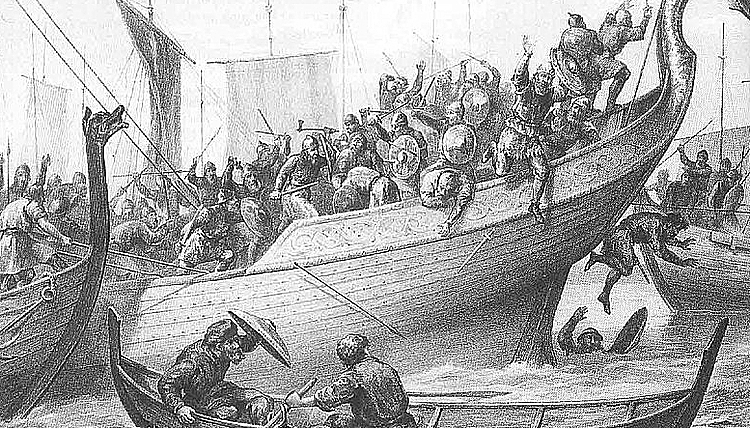
Why were the Vikings so successful in warfare?
Ruthless – certainly. Successful? Not always. The Vikings were good at exploiting weakness. Raiders (and the Vikings were excellent at this), have a natural advantage over ordered polities. They can strike quickly and at random, escaping before they can be intercepted or before help can arrive. Rivers and seas acted as the highways of the medieval period, as a result towns and monasteries, were sited on coasts and rivers. These were wealth-tempting, and – in the case of monasteries – poorly defended, targets, which, it is fair to add, Anglo-Saxon rulers were not immune from attacking themselves. The longship gave the Vikings strategic mobility, and the combination of accessible targets and excellent ships proved lethal.
Of course things could, and did, go wrong. The sea is fickle, resulting in the loss on occasions of not just individual ships, but whole fleets, but primarily the raiding activities of the Vikings were successful because they were so difficult to intercept. This does not mean that the Anglo-Saxons, Franks or any of their other victims should be regarded as completely incompetent. In an earlier period, when the Roman Empire effectively laid claim to both sides of the Channel, it had similar problems with Anglo-Saxon pirates!
Success breeds success, and in that respect the weakness of the various Anglo-Saxon and Frankish kingdoms in the face of repeated attacks led to larger and larger raids, over wintering and, finally, in the case of England, the descent of the Great Raiding Army in AD 866 upon East Anglia. So great and terrible was this force that the East Anglians made no attempt to resist, instead they bought peace with horses. The Kingdom of Northumbria was next to fall – already in the grip of civil war and therefore ripe for the Vikings’ particular skill of exploiting internal weakness. It was followed in succeeding years by the remainder of East Anglia and a large part of Mercia.
Success, however, leads to diminishing returns, for as more land is taken, more of the army is needed to hold it; thus the army which then turned its attention to the conquest of Wessex was not as great as the army which descended upon Northumbria in AD867. Of course Wessex almost fell, but nearly is not good enough and to counter the image of Viking success we need to remember that the first Viking age ended in a complete English victory.
The second Viking age is a different matter, but here again we initially see the same traits – raiding and exploitation of weakness. This time the weakness is the English leadership, and we move away from the classic image of the Viking as raider, to the Viking as king and nation, for the conquest under Swein was as King of Denmark, leading a royal army. The world had changed.
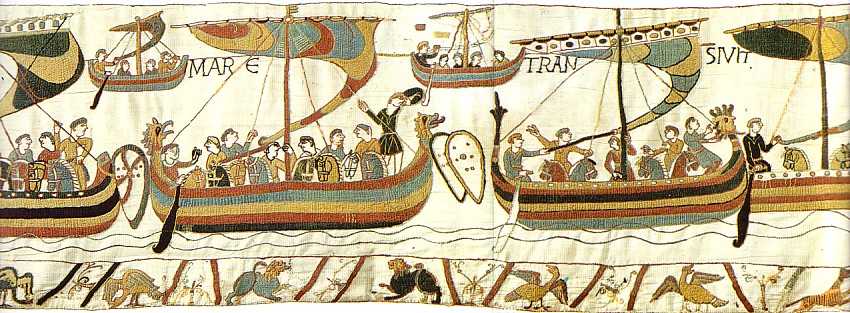
While we usually view the Vikings as raiders you took an in-depth look at their other types of warfare including naval warfare, siege and land battle. Can we see any Viking influence on later medieval military warfare?
You would think so, but curious as this may seem, they did not. As I stress in the book, the Vikings were very much a part of the European mainstream in terms of warfare. At times more successful, but ultimately fleeting. Raiding was a feature of warfare before the Vikings exploded onto the scene and continued after they had disappeared. Their longships gave them an edge, but by the end of the Viking age we are seeing the rise of the cog. The great raiding armies of the first Viking age, become national armies in the second, and then we see the Scandinavian kings, whose ancestors were the scourge of Christendom, become crusaders. The Viking Rollo, whose descendants became dukes of Normandy and kings of England perhaps, had the most impact. But the Normans adopted cavalry, castles and crossbows prior to the events of AD1066 – these were the trappings of European warfare at the beginning of the middle ages and all developed partly to combat the Viking threat. If the Vikings could be said to have had any impact on Norman and later warfare, then this would have been through subsequent Anglo-Danish influence. Hastings was an usual battle. For a start, it was very long – lasting practically the whole day; and both sides came very close to winning at various points. Indeed, as the battle progressed a draw would have sufficed Harold – and he came very close to achieving this. However, as we all know, William prevailed and Harold lost his life and his kingdom. What it showed the Normans was the value of the English’s housecarls – dismounted knights acting as well armoured, close-order heavy infantry – and this was summarily added to the Norman’s tactical repertoire and used to great effect by the Anglo-Norman kings. In a way, this might be viewed as a vindication of Harold’s tactics, showing that even at the end of the Viking period the tactics employed by English and Viking armies were not obsolete in the face of the “all conquering” mounted knight.
With thanks to Ian Stephenson and Amberley Publishing.
We have a copy of Vikings! by I.P. Stephenson to give away courtesy of Amberley Publishing. Just leave a comment below by midnight Sunday the 6th of July.
 Ian Stephenson is a specialist in Roman and Early Medieval warfare. He has an M.Litt by research in archaeology from the University of Newcastle upon Tyne, where his thesis looked at the construction and use of the shield in early Anglo-Saxon England. He has published and lectured widely with his work ranging from Hannibal to the Norman conquest. Currently working on a general history of the Viking period, as well as a study of the early Germans at war, he lives in Reading with his daughter.
Ian Stephenson is a specialist in Roman and Early Medieval warfare. He has an M.Litt by research in archaeology from the University of Newcastle upon Tyne, where his thesis looked at the construction and use of the shield in early Anglo-Saxon England. He has published and lectured widely with his work ranging from Hannibal to the Norman conquest. Currently working on a general history of the Viking period, as well as a study of the early Germans at war, he lives in Reading with his daughter.
 Vikings! by I.P. Stephenson, published by Amberley Publishing 2014.
Vikings! by I.P. Stephenson, published by Amberley Publishing 2014.
Buy Vikings! by I.P. Stephenson
Viking is such a vivid word, steeped in imagery and blood. The Viking Age began and ended in England. Its first act in AD 789 was a murder on a beach in Dorset; its last, some two and a half centuries later, was the crowning of a Dane in London as king of a united England. In between, the Vikings waged war on four continents, they besieged London, Paris and Constantinople, founded Russia and the Duchy of Normandy and very nearly snuffed out Anglo-Saxon England. Yet these days they are seen more as traders and explorers than as warriors. This new history returns the Vikings to their former position as the scourge of Christendom.

